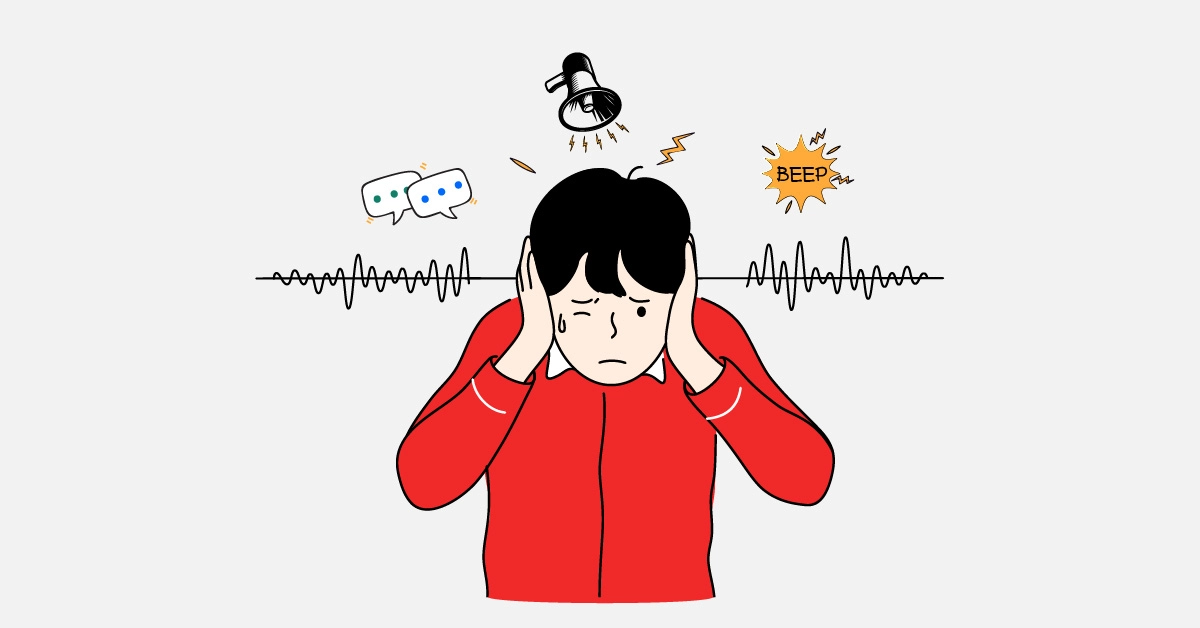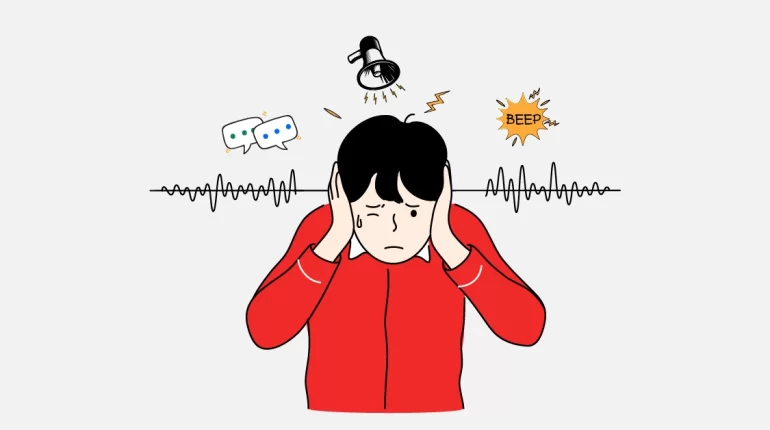Noise pollution, often overlooked amidst other environmental concerns, poses significant risks to human health and well-being. Defined as unwanted or harmful sound that disrupts normal activities and quality of life, noise pollution affects millions worldwide, impacting physical health, mental well-being, and overall quality of life.
Health Impacts of Noise Pollution
Hearing Loss:
Prolonged exposure to loud noises can cause irreversible damage to the auditory system, leading to hearing loss or impairment. Industries, transportation, and recreational activities are common sources of high decibel levels that contribute to this risk.
Cardiovascular Effects:
Chronic exposure to noise pollution is associated with increased risk of cardiovascular diseases such as hypertension, heart attacks, and strokes. Elevated stress hormone levels and disrupted sleep patterns contribute to these health risks.
Sleep Disturbances:
Noise pollution disrupts sleep patterns, leading to insomnia and reduced sleep quality. Even low-level noise can trigger the body’s stress response, elevating heart rate and blood pressure, and impairing the ability to fall and stay asleep.
Cognitive Impairment:
Studies suggest that noise pollution impairs cognitive function, particularly in children and older adults. Persistent exposure to noise can affect concentration, memory, and academic performance in children, while in adults, it may contribute to reduced productivity and increased errors.
Psychological Effects:
Constant exposure to noise pollution can lead to increased levels of anxiety, irritability, and even depression. The inability to find quiet spaces for relaxation and reflection further exacerbates these mental health issues.

Sources of Noise Pollution
Transportation:
Road traffic, aircraft, and rail systems are major sources of noise pollution, particularly in urban areas. Traffic congestion and increased vehicle use contribute significantly to noise levels, affecting nearby residents and commuters.
Industrial Activities:
Manufacturing plants, construction sites, and industrial machinery generate high levels of noise pollution. Workers in these environments are at risk of hearing damage and other health effects without proper protective measures.
Recreational Activities:
Recreational activities such as concerts, sporting events, and noisy recreational vehicles (e.g., motorcycles, jet skis) contribute to noise pollution. While enjoyable, these activities can have long-term consequences for participants and nearby residents.
Urbanization and Development:
Urban development and population growth increase exposure to noise pollution. Residential areas near commercial districts, airports, and highways often experience higher noise levels, impacting residents’ quality of life.
Mitigating Noise Pollution
Regulatory Measures:
Governments implement noise regulations and standards to limit exposure levels in residential, commercial, and industrial areas. These measures include soundproofing requirements, zoning laws, and noise ordinances to protect public health.
Technological Solutions:
Advances in technology, such as noise barriers, acoustic insulation, and quieter transportation systems, aim to reduce noise emissions and mitigate its impact on communities.
Community Awareness and Education:
Educating the public about the health risks of noise pollution encourages individuals and communities to take proactive steps. Noise-reducing behaviors, such as using headphones at safe volumes and maintaining vehicle mufflers, contribute to a quieter environment.
Urban Planning and Design:
Incorporating noise reduction strategies into urban planning and design improves quality of life in urban areas. Green spaces, pedestrian-friendly zones, and buffer zones between residential and noisy areas help minimize noise exposure.
Noise pollution is a pervasive environmental issue with far-reaching consequences for human health and well-being. From hearing loss and cardiovascular disease to sleep disturbances and cognitive impairment, the impact of noise pollution is undeniable. Addressing this issue requires a combination of regulatory measures, technological innovations, community engagement, and urban planning strategies to create quieter, healthier environments for all. By raising awareness and implementing effective solutions, we can mitigate the harmful effects of noise pollution and ensure a better quality of life for current and future generations.


















